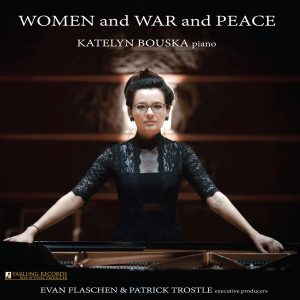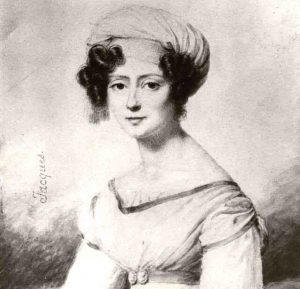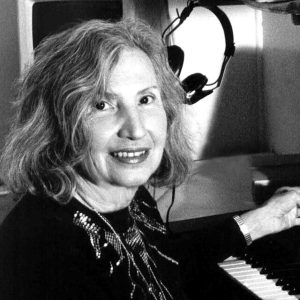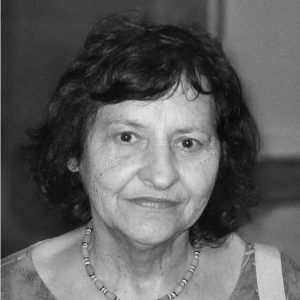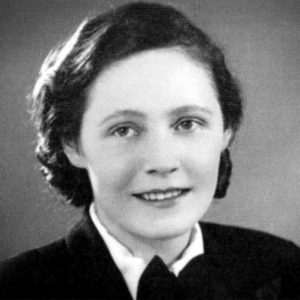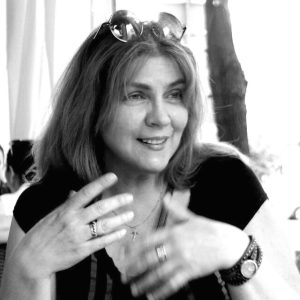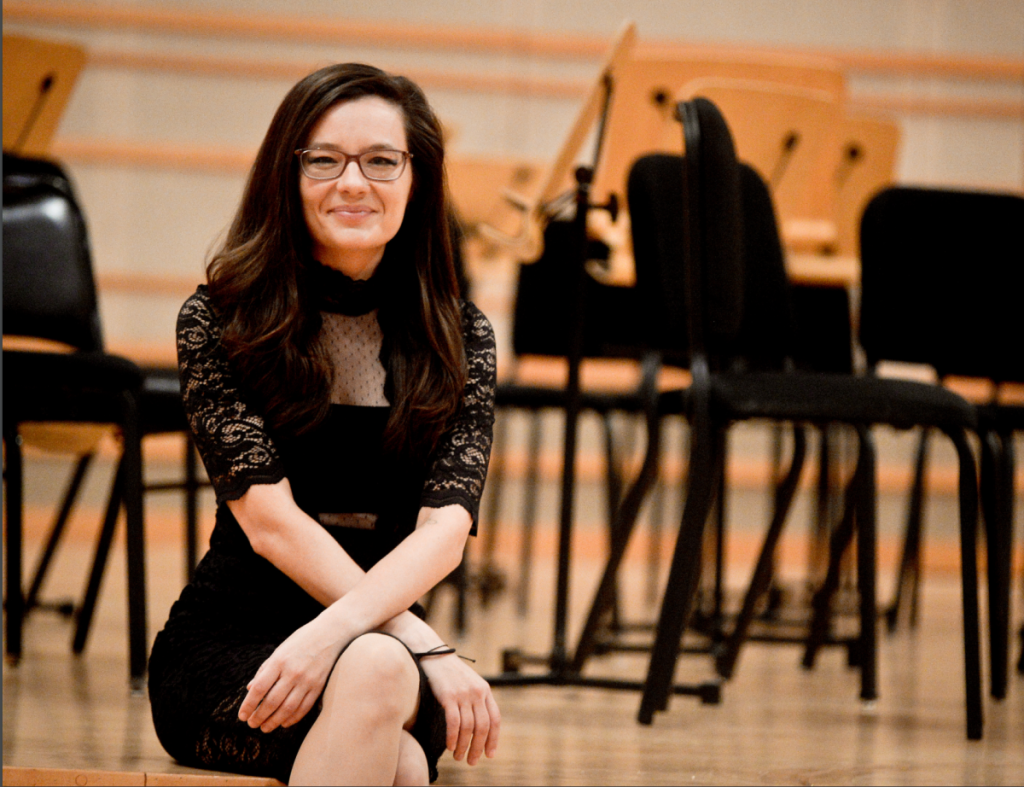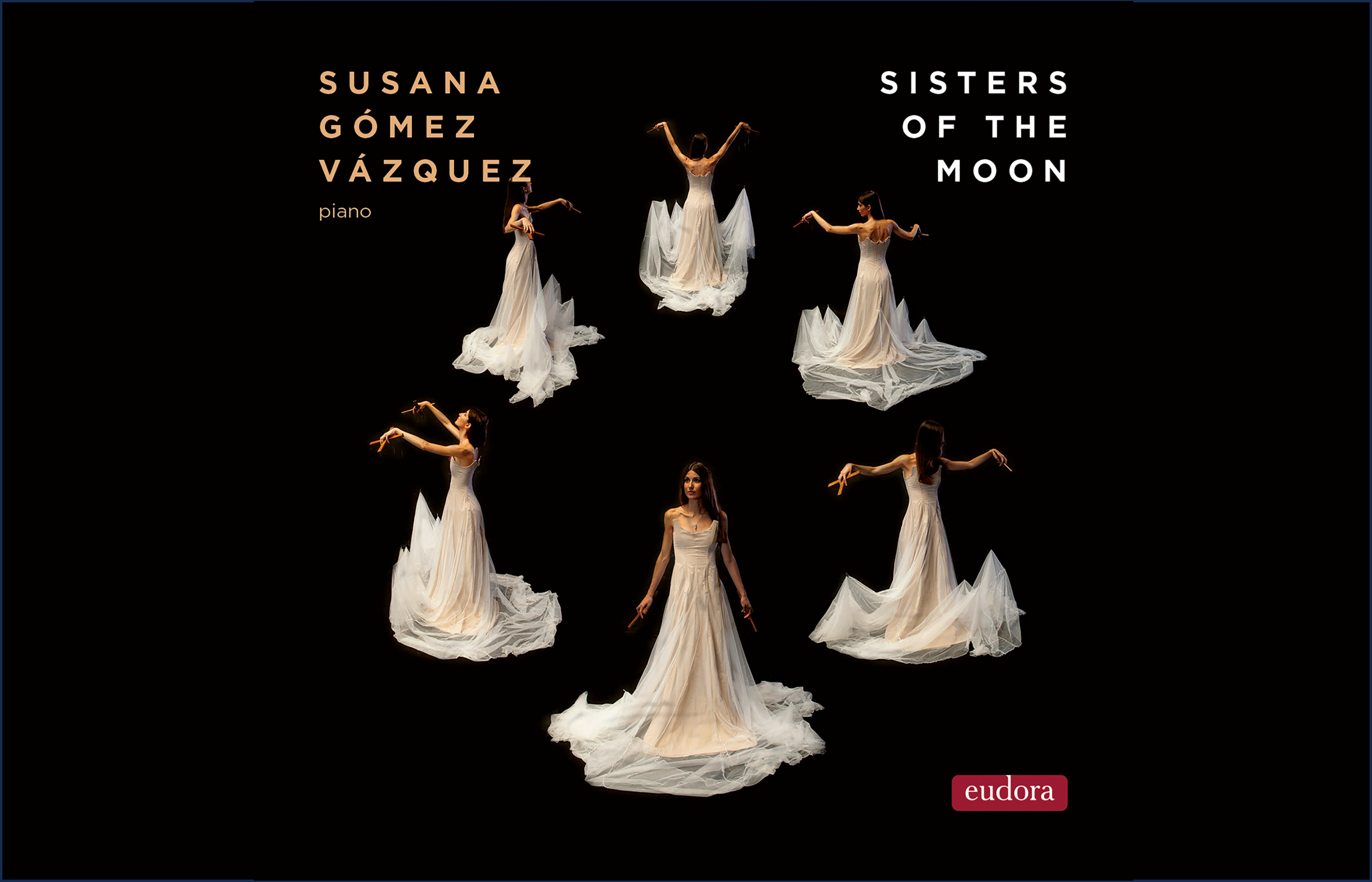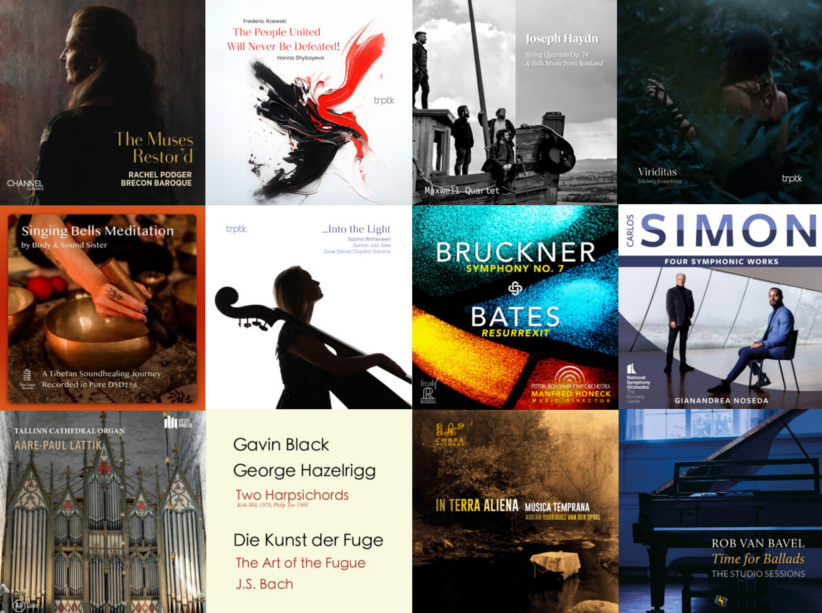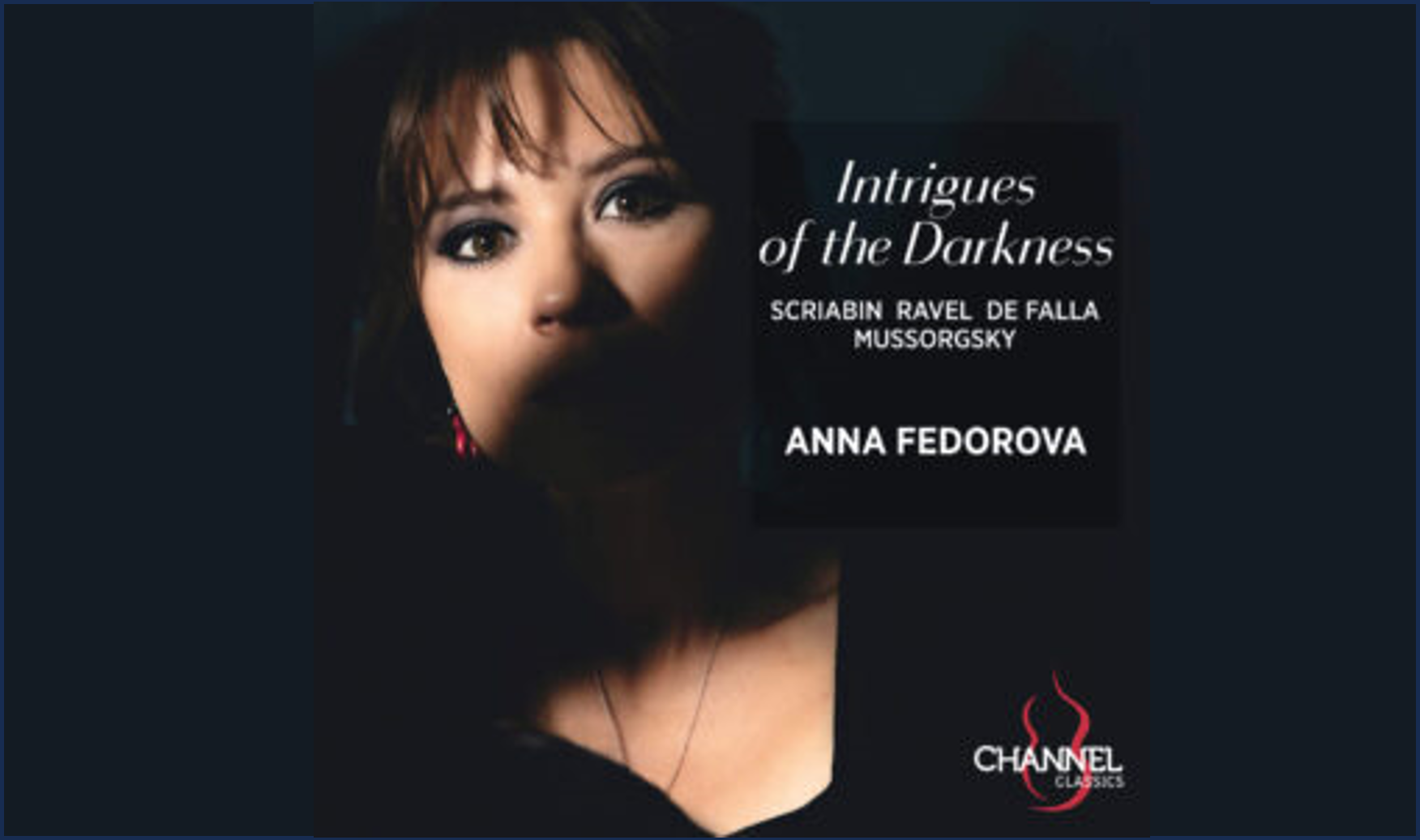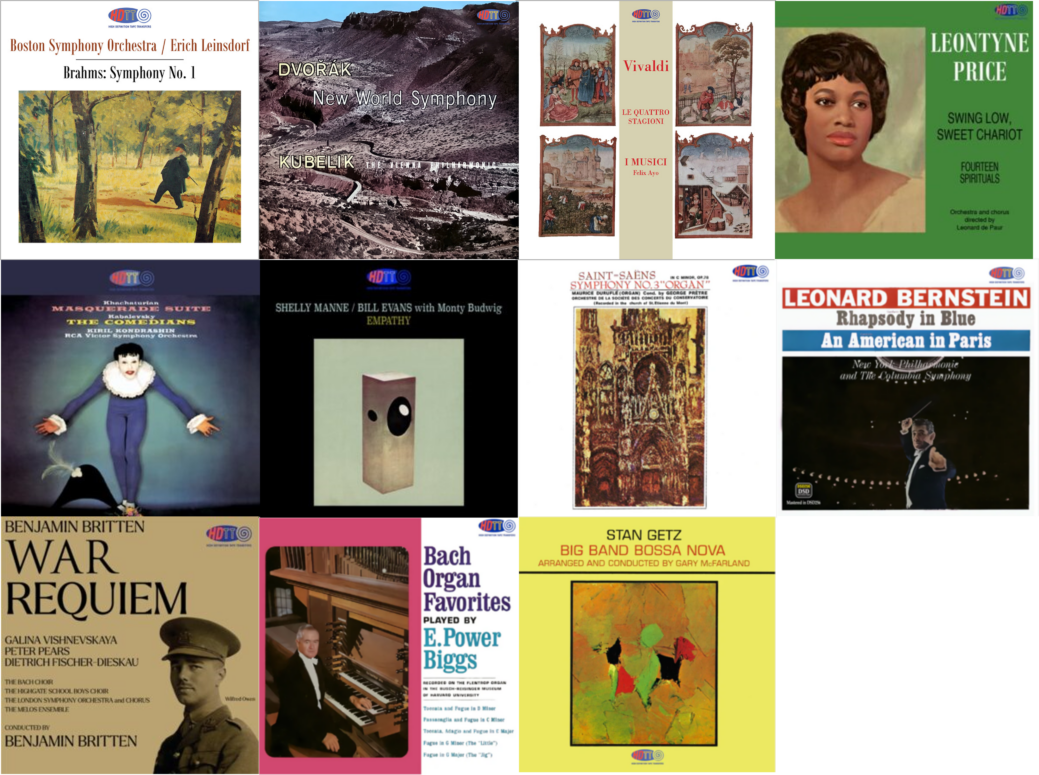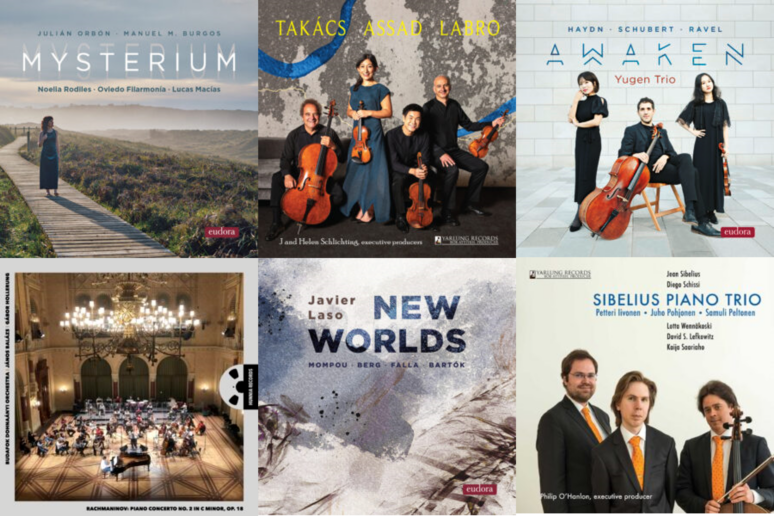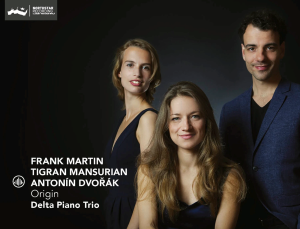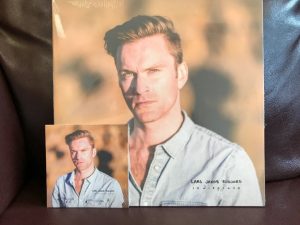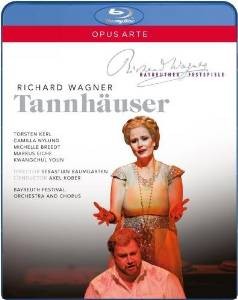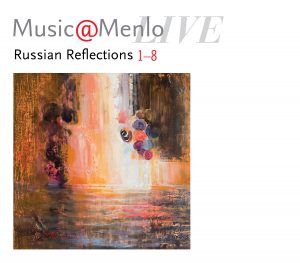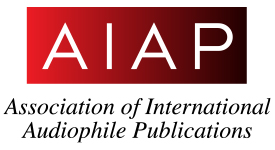This is a brilliant new release by pianist Katelyn Bouska, recorded and mastered in Pure DSD256 by Bob Attiyeh of Yarlung Records. But what makes this recording truly special are the musical works selected and the stories of the composers, all women who were at the cutting edge of the contemporary music scenes in their various environments and were refugees, or barely survived, or didn't survive the environments that made their situations so difficult.
Women and War and Peace, Katelyn Bouska, piano. Yarlung Records 2023 (Pure DSD256) HERE
Print space is always limited, even in an online journal. But when there comes along a release of such exceptional merit, with such an exceptional story to share, and performed and recorded so brilliantly as this, then space must be made and priorities shifted.
Not only is Katelyn Bouska, who teaches at the Curtis Institute, a superb pianist, not only does this Pure DSD256 recording capture superbly the sound of her New York Steinway in the Samueli Theater at Segerstrom Center for the Arts in Costa Mesa, with it's marvelous acoustics, not only are these compelling musical compositions, these are works by composers whose lives and stories need to be shared.
So, start with an understanding that this album is a sonic masterpiece made with an audio purist's attention to detail and ultimate sound quality. Producer Bob Attiyeh and fellow recording engineer and equipment designer Arian Jansen used the SonoruS ATR12 to record analog tape, the Merging Technologies HAPI to record 256fs DSD in stereo and surround sound and the SonoruS ADC to record PCM. The stereo microphone used was the AKG C24 microphone previously owned by Frank Sinatra and previously used in some of Yarlung's other recordings, kindly loaned for this recording by Ted Ancona. And vacuum tube microphone amplification was provided by Yarlung executive producer and designer Elliot Midwood.
Microphone placement for the stereo recording to which I'm listening captures the full richness, resonance, detail and frequency extension of this wonderful grand piano. More importantly, placement allows us to hear the air and reverberation of the hall so that we also hear the overtones of the strings, not just the immediacy of hammers striking. This is how a piano recording should be made, this is what a live piano sounds like (as best as our technology and reproduction systems will currently allow). From deep growling notes to delicate high sparkling shimmers, one hears the full range of this piano.
But, at the end of the day, this album is all about the music and the women who composed it.
As explained in the notes for the album, Women and War and Peace took shape during concert pianist Katelyn Bouska's darkest days of isolation during the coronavirus pandemic. She missed her family and friends, her students at Curtis Institute in Philadelphia and her live performances in front of living breathing audiences. To use the time productively, Bouska revisited women composers she wanted to explore and realized many of them shared a common theme. They were refugees, or they barely survived, or didn't survive. While the music Bouska selected is not always reflective of the trauma in their lives, the music certainly celebrates these composers as having voices of merit to share.
I have been listening and relistening to the music on this album for several days now. I continue to find new aspects of many of the works that bring me a new insight, tickle my fancy, give me joy. I mentioned this album to Ann over coffee. I told her I was quite taken by it and was writing a review. Later in the day, she poked her head around the corner to say, That piano album you mentioned? I've been listening to it and and I'm totally intrigued by the music. The first track, by the younger American composer, is just amazing! I love what she has done in it—that slow unfolding start where one can't figure quite where she is going, then the Chopin emerging, then the fading away. I love it. And the other works I've heard so far by the other women are great—working through a second listen now. Bye! And she was gone.
Well, when Ann makes a point of telling me she's enjoying a recording, I really do pay attention. She's the musician in the house. She also has little patience for music she doesn't find engaging or well crafted. In this case, she later told me she was doubly pleased to find this album highlighted women composers of the twentieth century whose music she found quite interesting. And, she was really enjoying how well Katelyn played these pieces. So, let me tell you more about this cause of Ann's excitement.
Caroline Shaw (b. 1982)
The album opens with a work by contemporary American composer Caroline Shaw (b. 1982). She is best known for her composition Partita for 8 Voices, for which she won the 2013 Pulitzer Prize for Music. As Bouska notes, Caroline Shaw is the one composer not directly affected by European wars, but the inclusion of her Gustave Le Gray is a most welcome and provocative addition.
Gustave Le Gray (2012) is named for the French photographer of that name who was the central figure in French photography of the 1850s. The inspiration for the piece is from the darkroom exposure of a photograph, hinting at depths before they are actually visible. It opens with barely discernible notes and slowly evolves into Chopin's famous Mazurka in A Minor before concluding with more keyboard writing that is completely Shaw's. I find it an interesting piece that challenges my listening to discern what Shaw is doing and where.
Katelyn writes that this piece was brought to her attention by one of her students, who "described it to me as musical photography, slowly evolving, taking shape and emerging from the musical shadows before dissolving again at the end." She elaborates that, "This is the magic of our art form—its suspension of time and texture and place, giving the listener and performer alike each their unique experience... Chopin's Mazurka develops and decays in the center of the work, a simple melody emerging deeply in the bass register of the piano. Caroline's introduction proceeds slowly and firmly anchored, with rich openly spaced harmony, ‘solid and simple like the Appalachian foothills.' This solemn stability marks the end's beginning as well. Soon follow more musical fragments including a simple chorale, ‘a linen hymn.' The opening hypnotic theme returns, ‘like the fragmented hem of a song from a long time ago.' Gustave Le Gray ends with a handful of final repeated chords, ‘dry, as if spoken,' and Caroline's piece, all fourteen minutes, departs as simply as it began."
Gustave Le Gray is a work for which I am grateful to be introduced. As I mentioned in the introduction, this is the work about which Ann came around the corner with some excitement to tell me she was enjoying very much. Its inclusion is a most welcome and provocative addition, even if it doesn't quite fit the theme for the album. The album is comprised, most significantly, of selections of music that have been meaningful for Katelyn during her time of isolation and struggle during the pandemic—and that makes the selection meaningful unto itself.
Maria Szymanowska (1789 - 1831)
Polish composer Maria Szymanowska (1789 - 1831) was an acclaimed and successful society pianist, and apparently court pianist to the Empress of Russia when she died. Her compositions include a quite pleasant Mazurka, a Polish folk dance, and a Fantaisie written in 1819, dedicated to a Polish Princess, and clearly very Polish. It contains a level of color and virtuosity that would only have been possible with her Broadwood piano, which Katelyn references in the enclosed booklet. All quite enjoyable and engaging.
Ruth Schönthal (1924 - 2006)
Ruth Schönthal's Fragments from a Woman's Diary (1985) is a piece I had to work at to get my head wrapped around what she was doing in the piece. Ann found this piece immediately accessible and engaging. I had to put some work into my listening, but I've been greatly rewarded in the end. This is not a work with a continuing theme or even development. As it's name says, it is truly fragments. Fragments of thoughts, feelings, expressions of experiences. There is something here akin to a novel written in stream of consciousness. As a listener, you ride along with Schönthal's snippets—each unto itself unique. Occasionally you will get a quote from somewhere else as she passes that music through her own unique filter to create something uniquely her own at the end. Altogether it is a fascinating 27 minute journey.
Katelyn's performance is truly remarkable. As the work progresses, Katelyn shifts, morphs, realigns to bring out the ever-changing moods and perspectives that Schönthal challenges one to explore with her. A very impressive accomplishment by Bouska! Her playing carries me along and keeps me totally engaged. As I'm typing this, I am now on my fifth traversal of this work and enjoying the music more than ever.
Ruth Schönthal spent ten years as refugee fleeing the Nazis (from Hamburg to Sweden, the USSR to Japan, Mexico finally to New York) before finding stable asylum. Some of this you will hear in her music.
Ivana Loudová (1941 - 2017)
Ivana Loudová's Prague Imaginations: Five Pieces for Piano (1995) is a work filled with color, constantly changing and contrasting sounds, widely varying dynamics, emotional shifts from delighted to threatened. From delicate shimmering high notes, softly played, to huge bass chords, the music is in a constant state of exploration, fully (and massively) exploiting the range of the piano. The first of the five pieces begins with separate contrasting, atonal, notes of a questioning and questing aspect, then rolls into a martial thunder, then alternating to varying treatments of questing notes and strong rolling bass chords. All accomplished with a fascinating interplay of sound. The other pieces continue with delightful contrasts of delicacy and thunder, always exploring, and never boring.
Katelyn describes this work as "a musical snapshots of her beloved Prague, an auditory stroll through the city, capturing both the immediacy of its present but also the city's complex past. She embeds the sounds, images and history of the city into this music, the city's tolling bells and iconic towers, the mysterious carillon strains of Loreta Monastery and even the folklore of Charles Bridge." I'll take that. But, I'm a listener who prefers to sidestep programmatic explanations and just listen to the music for how it speaks to me, unaware of what it is supposed to present. And at this pure music level, this work resonates richly with me.
Katelyn's flexibility, strongly gripped rhythms, and richness of dynamic shading make of the work something that is simply alive. It's quite marvelous to hear. But, once again, it is a work that richly rewards on repeated hearings and with an open ear.
I'd have to listen to more of Loudová's works to be sure, but she strikes me as a composer well attuned to composing for timbre and an immense range of color. Listening to Prague Imaginations makes me believe that the brief time she was able to spend studying in the 1970s with Olivier Messiaen was well spent and that she perhaps met a teacher whose instincts matched her own.
Vítězslava Kapralova (1915 - 1940)
The lovely Dunova preludia ("April Preludes," 1937) by Czech composer Vítězslava Kapralova (1915 - 1940) is a pretty and very accessible work. As a friend wrote to me in an exchange about this album, "it's a lovely piece, sounds very Czech, lots of hints at Janacek, given she studied in Brno, always a good thing."
Kapralova began this piece in 1937 when her future looked bright as a young prodigy finishing her studies in Prague and preparing for a move to Paris. Katelyn writes that "her trajectory continued during her time in Paris. She worked closely with Bohuslav Martinů, knew Nadia Boulanger, and joined the ranks of a handful of woman to conduct the BBC Symphony Orchestra in London."
Despite her untimely death in 1940 at the age of 25, Kaprálová created an impressive body of work. In addition to her best known piano work (heard here), her highly regarded art songs, a string quartet, a reed trio, music for cello, music for violin and piano, an orchestral cantata, two piano concertos, two orchestral suites, a sinfonietta, and a concertino for clarinet, violin, and orchestra. Much of her music was published during her lifetime and in 1948 the Czech Academy of Sciences and the Arts awarded Kaprálová membership in memoriam.
On the eve of the Nazi invasion of Czechoslovakia in 1937, Kaprálová left her homeland to study with the Czechoslovak composer Bohuslav Martinů in Paris. During the Nazi occupation of Czechoslovakia, she remained in France, continuing her studies with Martinů. During this time, she experimented with a variety of compositional styles ranging from a conservative folk-like idiom to a neo-classicism inspired by Stravinsky, and cultivated a kind of modernism modeled after her teacher, Martinů. Shortly before the Nazi occupation of France, Kaprálová became terminally ill, possibly from typhoid fever misdiagnosed as military tuberculosis, and died at the age of 25.
Ludmila Yurina (b. 1962)
The final work on the album is Ukranian composer Ludmila Yurina's Shadows and Ghosts (1999), an atonal work in which Yurina plays with sounds normally generated by electronic instruments, here performed by Bouska entirely acoustically on the piano. Yurina originally improvised this piece during a live concert and later transcribed her performance, as heard here.
Katelyn writes, "Shadows stretches an acoustic piano's abilities in challenging ways, incorporating avant-garde jazz elements and keyboard techniques including the natural decay of sustained notes that sound like extended techniques but aren't."
The work fascinates me as it builds acoustical walls from selected dissonances and then overlays them with delicate skeins of sound that sometimes are barely heard and sometimes leap out boldly. Yet another piece that I found rewarding on the second and third listening, where on the first listen I had difficulty getting in tune with it. Now, I am finding thoroughly and engagingly rewarding. So, kudos to Katelyn for its selection to conclude this album.
P.S., you should also read Bob Levi's review HERE.
Katelyn Bouska, a portrait.
In the stories of the composers whose work Katelyn shares, she says that sees her own story reflected. As an American descending from a long line of Czech immigrants, she maintains her own delicate balance of cultivating tradition and forging her own path.
I am grateful to receive this gift of music and insights. This is simply a marvelous album. Most highly recommended!




